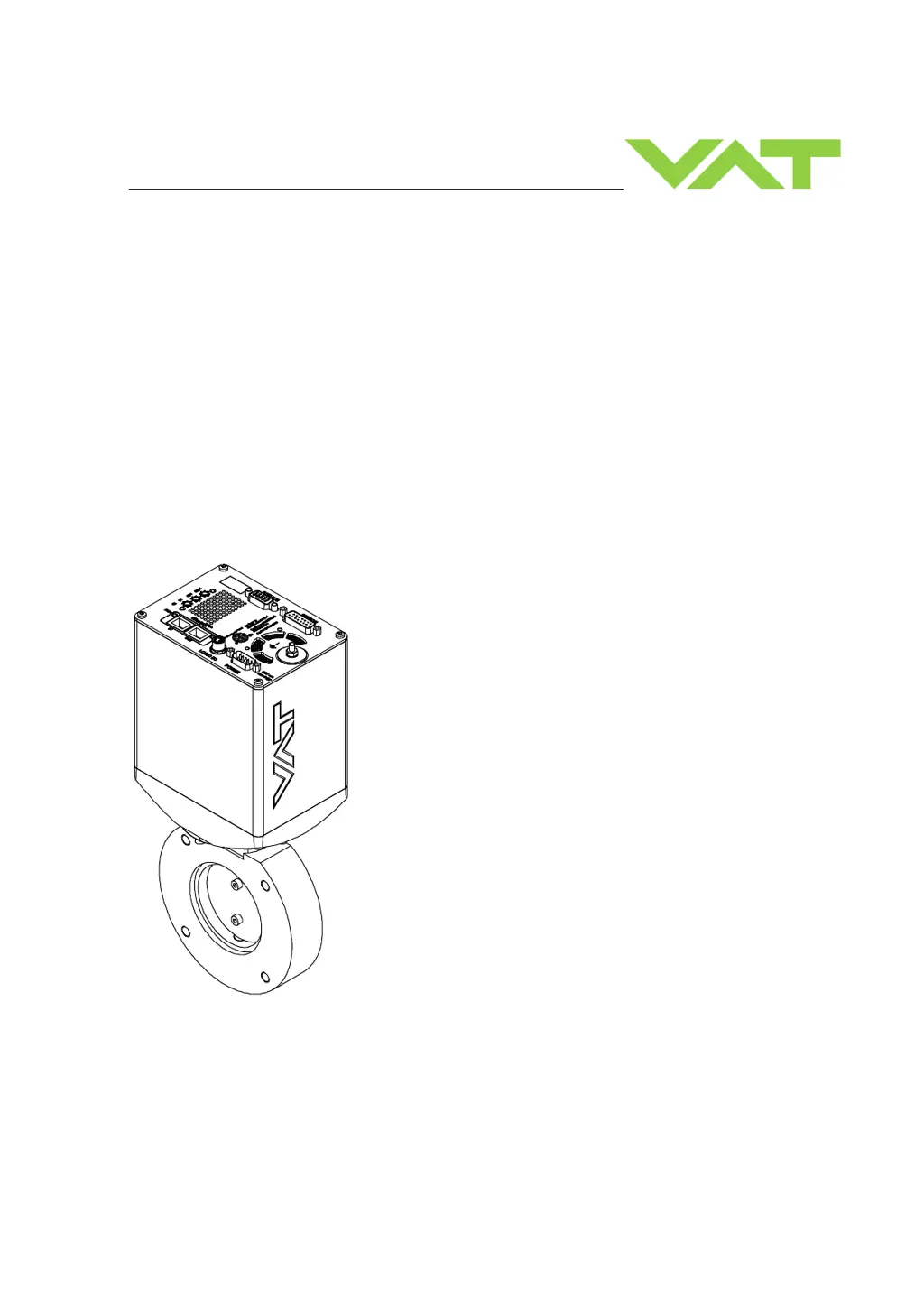What to do if VAT 612 Control Unit POSITION CONTROL mode is not selected?
- KKelly AdamsSep 22, 2025
Select POSITION CONTROL mode. Refer to «Position control» for details.
What to do if VAT 612 Control Unit POSITION CONTROL mode is not selected?
Select POSITION CONTROL mode. Refer to «Position control» for details.
What to do if the VAT Control Unit display shows «E 40» (fatal error - motor driver failure detected)?
If the VAT Control Unit display shows «E 40», it indicates a fatal error due to a motor driver failure. Replace the control and actuating unit according to «Maintenance procedure».
What does 'M100' on the VAT Control Unit display mean?
The display showing 'M100' indicates that maintenance mode is active. This is because pin 13 of the service connector is connected to ground, which will cause the plate to open and block further movement.
Why does the VAT 612 Control Unit display «D 0» Motor Interlock is open?
The VAT Control Unit displays «D 0» because motor power may not be supplied. To resolve this, provide power to the motor to allow for operation, referring to the «Electrical connection» details.
What to do if the VAT 612 remote operation does not work?
If remote operation of the VAT Control Unit does not work, it might be because local operation via the service port is active, or safety mode is active (check for D on the display). To solve this, switch to remote operation and provide power to the motor. Refer to «Electrical connection» for details.
What to do if the VAT 612 display shows «SR» (Service Request)?
If the VAT Control Unit display shows «SR» (Service Request), it could be due to a heavily contaminated valve unit. Clean the valve unit according to «Maintenance procedures» to resolve this.
What to do if the VAT 612 display shows «E 22» (fatal error - rotation angle of valve plate limited during operation)?
If the VAT Control Unit display shows «E 22», it indicates that the rotation angle of the valve plate is limited during operation. This could be due to a heavily contaminated valve unit or a mechanically obstructed valve plate. Clean the valve unit and resolve any obstruction.
What to do if the VAT 612 Control Unit CLOSE VALVE does not work?
If the VAT Control Unit CLOSE VALVE function does not work, it could be because the safety mode is active (check for D on the display) or maintenance mode is active. Provide power to the motor to allow for operation; refer to «Electrical connection» for details. Also, refer to “Display shows «M C»”.
What to do if the VAT 612 OPEN VALVE does not work?
If the VAT Control Unit OPEN VALVE function does not work, it could be because the safety mode is active (check for D on the display) or maintenance mode is active. Provide power to the motor to allow for operation; refer to «Electrical connection» for details. Also, refer to “Display shows «M100»”.
What to do if the VAT Control Unit display shows «E 21» (fatal error - rotation angle of valve plate limited during power up)?
If the VAT Control Unit display shows «E 21», it means the rotation angle of the valve plate is limited during power up. This may be due to a valve plate that is not centric adjusted, a heavily contaminated valve unit, or a mechanically obstructed valve plate. Adjust the valve plate, clean the valve unit, and resolve any obstruction.
| Input Voltage | 24 VDC |
|---|---|
| Output Voltage | 24 VDC |
| Current Rating | 10 A |
| Operating Temperature | -20°C to +60°C |
| Protection Class | IP20 |
| Series | VAT 612 |
Emphasizes safety reading and defines danger levels (DANGER, WARNING, CAUTION, NOTICE).
Details the pressure control system, including components and operational modes.
Outlines the step-by-step procedure for installing the valve, including connections and grounding.
Presents critical notices regarding wrong connections and burned connector pins.
Details wiring for +24 VDC sensors via the controller, including connector information.
Details wiring for ±15 VDC sensors without an optional SPS module.
Details wiring for ±15 VDC sensors with an optional SPS module.
Explains the EtherCAT interface connection, including network and cable specifications.
Outlines the setup steps required for the valve to perform pressure control.
Explains the ZERO function for compensating sensor offset voltage to zero pressure.
Describes the LEARN routine for adapting the PID controller to vacuum system characteristics.
Guides the selection of pressure control configurations based on gas flow availability.
Explains how to set up the pressure controller using CPA software or EtherCAT.
Details tuning procedures for adaptive pressure controllers, including gain factor and sensor delay.
Explains how to adjust the gain factor to affect stability and response time.
Describes adjusting sensor delay to improve stability, noting it can slow control response.
Explains how to adjust setpoint ramp time to improve pressure response, especially during decreases.
Details adjusting valve speed for optimal pressure and position control response.
Guides tuning pressure control performance for fixed PI controllers.
Explains how to optimize P gain and I gain for PI controller mode based on system characteristics.
Details tuning pressure control performance for soft pump controllers.
Explains how to adjust the P gain for pressure ramps during pump down.
Guides on preparing for pressure control, tuning performance, and using the PID controller.
